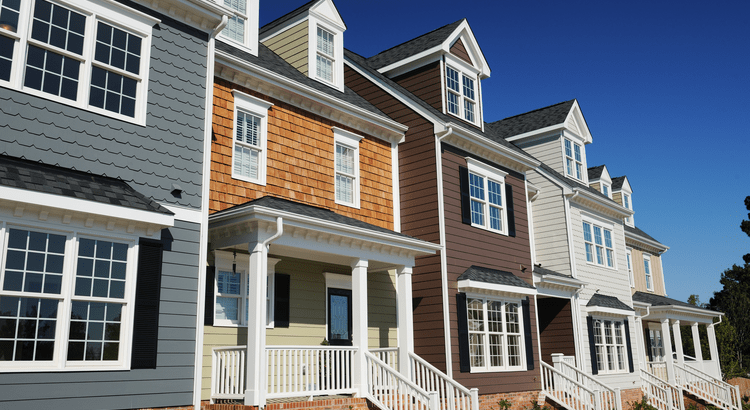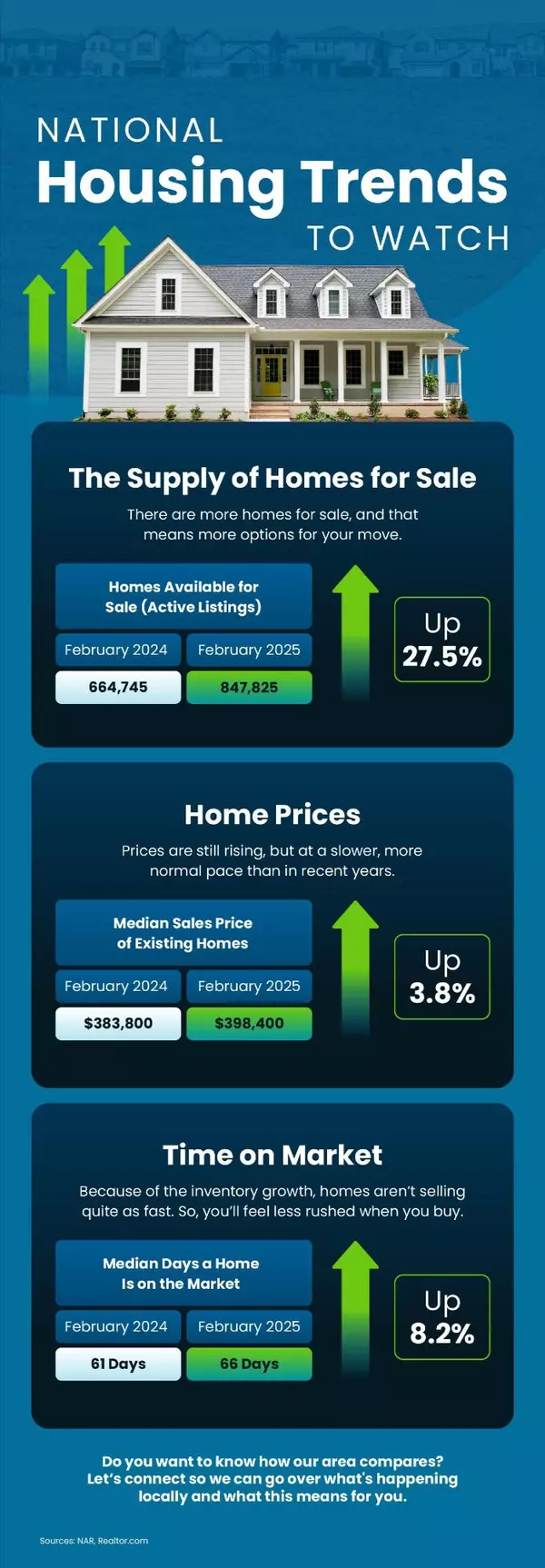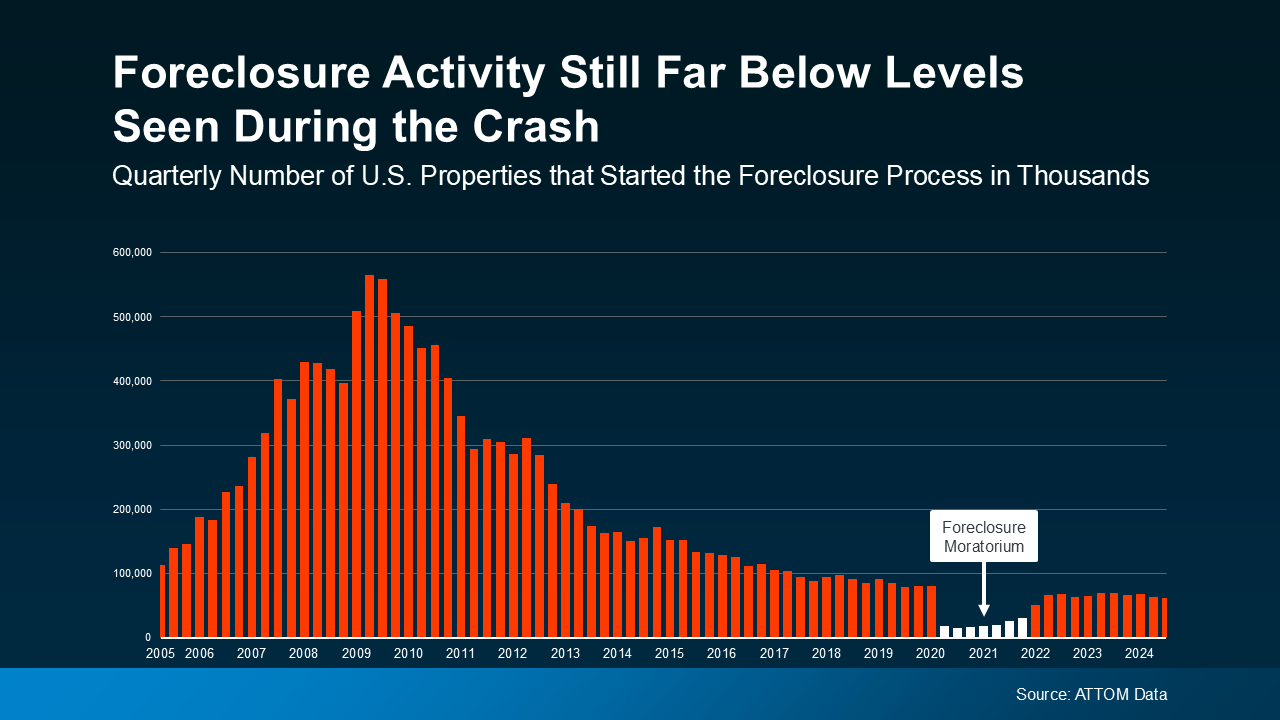Why Today’s Foreclosure Numbers Won’t Trigger a Crash
Why Today’s Foreclosure Numbers Won’t Trigger a Crash

With everything feeling more expensive these days, it’s natural to be concerned about how rising costs might affect the housing market. Many people worry that high prices and tighter budgets could lead more homeowners to fall behind on their mortgage payments, resulting in a wave of foreclosures.
However, before you start worrying about a housing market crash, let’s take a closer look at what’s really happening. The good news is that the latest foreclosure data indicates there’s no wave on the horizon.
How Today’s Market Is Different from 2008
Let’s alleviate those fears by examining the bigger picture. The graph below utilizes research from ATTOM, a property data provider, to illustrate that the number of homeowners initiating the foreclosure process is nowhere near the levels we saw following the 2008 crisis. During that time, there was a significant spike in foreclosures. Today, the number is much lower—and it has even decreased in the latest report. There’s a substantial difference between the current situation and what occurred when the housing market crashed (see graph below):
In case you’re curious about why foreclosure filings have slightly increased since 2020 and 2021, here’s what you need to know. During those years, there was a moratorium (shown in white) aimed at helping millions of homeowners avoid foreclosure during difficult times. This is why the numbers from just a few years ago were so remarkably low. Looking further back, it’s evident that overall foreclosure filings have decreased significantly.
Now, you might wonder how there are fewer foreclosures today, even with the rising cost of living. The answer lies in the fact that homeowners today have significantly more equity built up in their homes compared to 2008. As an article from Bankrate explains:
“In the years after the housing crash, millions of foreclosures flooded the housing market, depressing prices. That’s not the case now. Most homeowners have a comfortable equity cushion in their homes.”
This equity serves as a safety net, enabling many homeowners to steer clear of foreclosure even when facing financial difficulties. Even if someone is having trouble making their monthly payments, they may have the option to sell their home and avoid foreclosure altogether. This situation is drastically different from the conditions during the crash when homeowners owed more on their mortgages than their homes were worth.
What’s Ahead for the Housing Market
It’s true that today’s higher cost of living is a challenge for many individuals. However, this doesn’t indicate that we’re on the verge of a surge in foreclosures.
The equity cushion homeowners possess is helping to maintain low foreclosure filings. Today’s homeowners have more options available to avoid foreclosure.
Bottom Line
Yes, everyday expenses for gas and food have risen, but that doesn’t mean the housing market is on the verge of another foreclosure crisis. Data indicates that the market is far from facing a wave of foreclosures. Homeowners today are in a much stronger financial position compared to the 2008 crash, largely due to significant equity.
Categories
Recent Posts











